One cannot age a tree by its rings if that tree is located in which of the following forests
Tropical deciduous
Tropical evergreen
Temperte deciduous
Temperate evergreen
The correct Answer is:B
To determine in which type of forest one cannot age a tree by its rings, we need to analyze the characteristics of the different forest types listed in the question.
1. Understand Tree Rings: Tree rings, also known as annual rings, are formed by the growth of the tree during different seasons. Each ring typically represents one year of growth.
2. Identify Forest Types: The options given are:
- Tropical Deciduous
- Tropical Evergreen
- Temperate Deciduous
- Temperate Evergreen
3. Seasonal Growth Patterns:
- In Temperate Deciduous and Temperate Evergreen forests, trees experience seasonal changes (like winter and summer), which lead to the formation of distinct growth rings. The vascular cambium is active during the growing season and less active during the dormant season, resulting in clear annual rings.
- In Tropical Deciduous forests, trees also experience seasonal changes (wet and dry seasons), allowing for the formation of annual rings.
- In Tropical Evergreen forests, however, the climate is relatively stable throughout the year, with little to no seasonal variation. This stability means that the vascular cambium remains active year-round, and trees do not form distinct annual rings.
4. Conclusion: Since trees in Tropical Evergreen forests do not have distinct annual rings due to the lack of significant seasonal changes, one cannot age a tree by its rings in this type of forest.
Final Answer:
One cannot age a tree by its rings if that tree is located in Tropical Evergreen forests.
---
- Tropical Deciduous
- Tropical Evergreen
- Temperate Deciduous
- Temperate Evergreen
- In Temperate Deciduous and Temperate Evergreen forests, trees experience seasonal changes (like winter and summer), which lead to the formation of distinct growth rings. The vascular cambium is active during the growing season and less active during the dormant season, resulting in clear annual rings.
- In Tropical Deciduous forests, trees also experience seasonal changes (wet and dry seasons), allowing for the formation of annual rings.
- In Tropical Evergreen forests, however, the climate is relatively stable throughout the year, with little to no seasonal variation. This stability means that the vascular cambium remains active year-round, and trees do not form distinct annual rings.
One cannot age a tree by its rings if that tree is located in Tropical Evergreen forests.
Topper's Solved these Questions
- ANATOMY OF FLOWERING PLANTS BOOK - CENGAGE BIOLOGY ENGLISHCHAPTER - ANATOMY OF FLOWERING PLANTS EXERCISE - ASSERTION-REASONING QUESTIONS
14 Videos
- ANATOMY OF FLOWERING PLANTS BOOK - CENGAGE BIOLOGY ENGLISHCHAPTER - ANATOMY OF FLOWERING PLANTS EXERCISE - ARCHIVES
38 Videos
- ANIMAL KINGDOMBOOK - CENGAGE BIOLOGY ENGLISHCHAPTER - ANIMAL KINGDOMEXERCISE - Archives
34 Videos
Similar Questions
Knowledge Check
Allision is planting a garden with at least 15 trees. There will be a conbination of apple trees, which cost $120 each, and pear trees, which cost $145 each. Allision's budget for purchasing the trees is on more than $2,050. She must plane at least 5 people trees and at least 3 pear trees. Which of the following systems of inequaliteies represents the situation described if x is the number of apple trees and y is the number of pear trees ?
A120x+145y≥2,050
x+y≤15
x≥5
y≥3B120x+145y≥2,050
x+y≥15
x≤5
y≤3C120x+145≤2,050
x+y≥15
x≤5
y≤3D120x+145y≤2,050
x+y≥15
x≥5
y≥3A phylogenetic tree or evolutionary tree is a branching diagram shown the inferred evolutionary relationships among various biological species. Which of the following phylogenies is correctly represented?
A B
B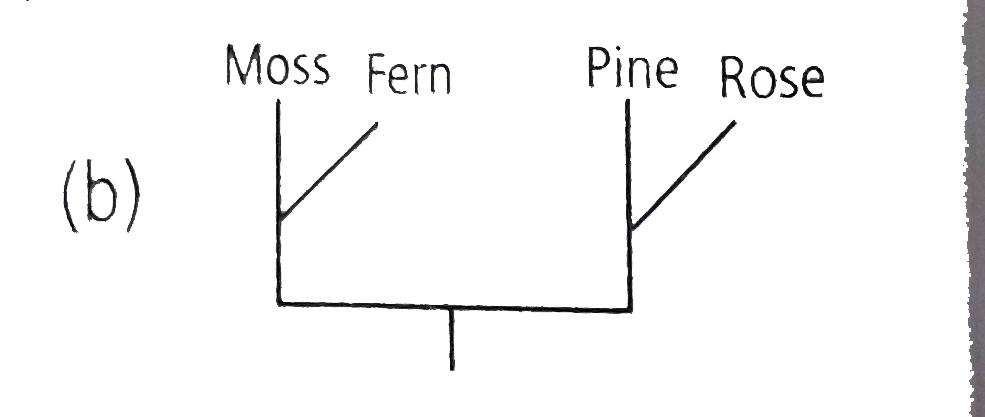 C
C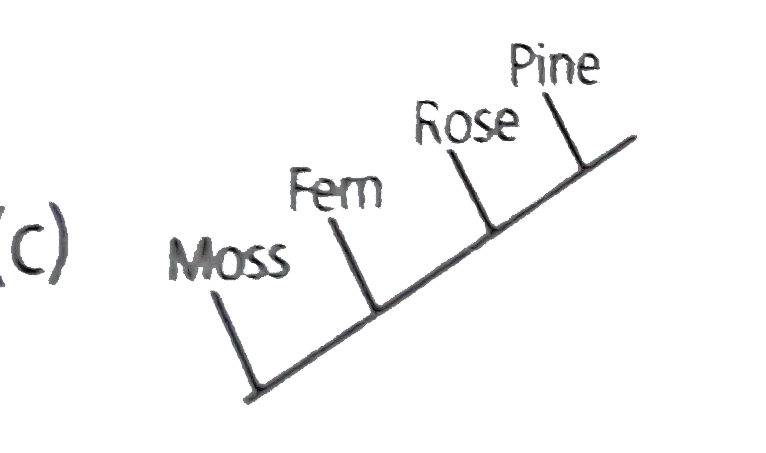 D
D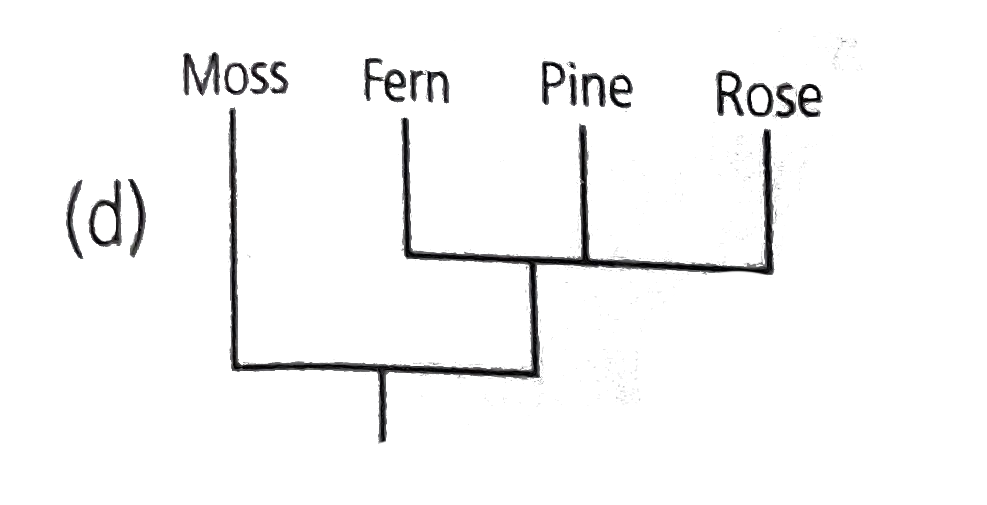
Sundari tree belongs to which type of forest?
ATropical evergreen forestsBTropical thorn forests and scrubsCTropical deciduous forestsDMangrove forests
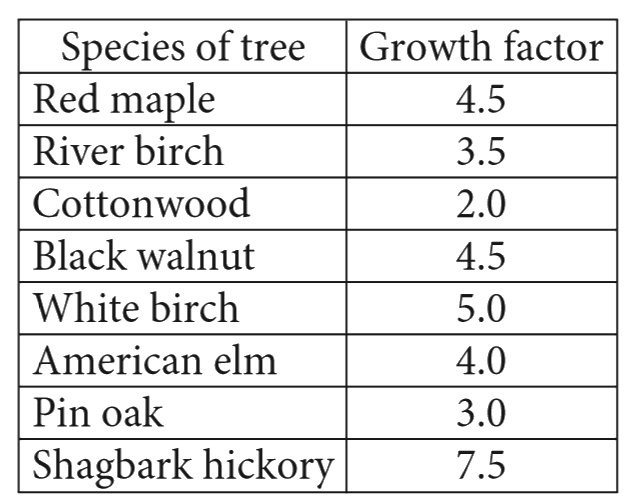
One method of calculating the approximate age , in years, of a tree of a particular species is to multiply the diameter of the tree, in inches, by a constant called the growth factor for that species. The table above gives the growth factors for eight species of trees.
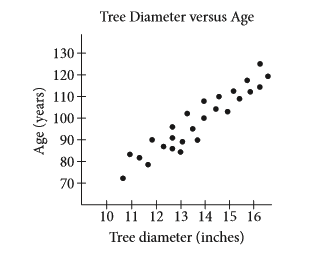
The scatter plot above gives the tree diameter plotted against age for 26 trees of a single species. The growth factor of this species is closest to that of which of the following species of tree
View SolutionComplete the missing entriesin the following factor tree
View SolutionWrite the missing numbers in the following factor tree :
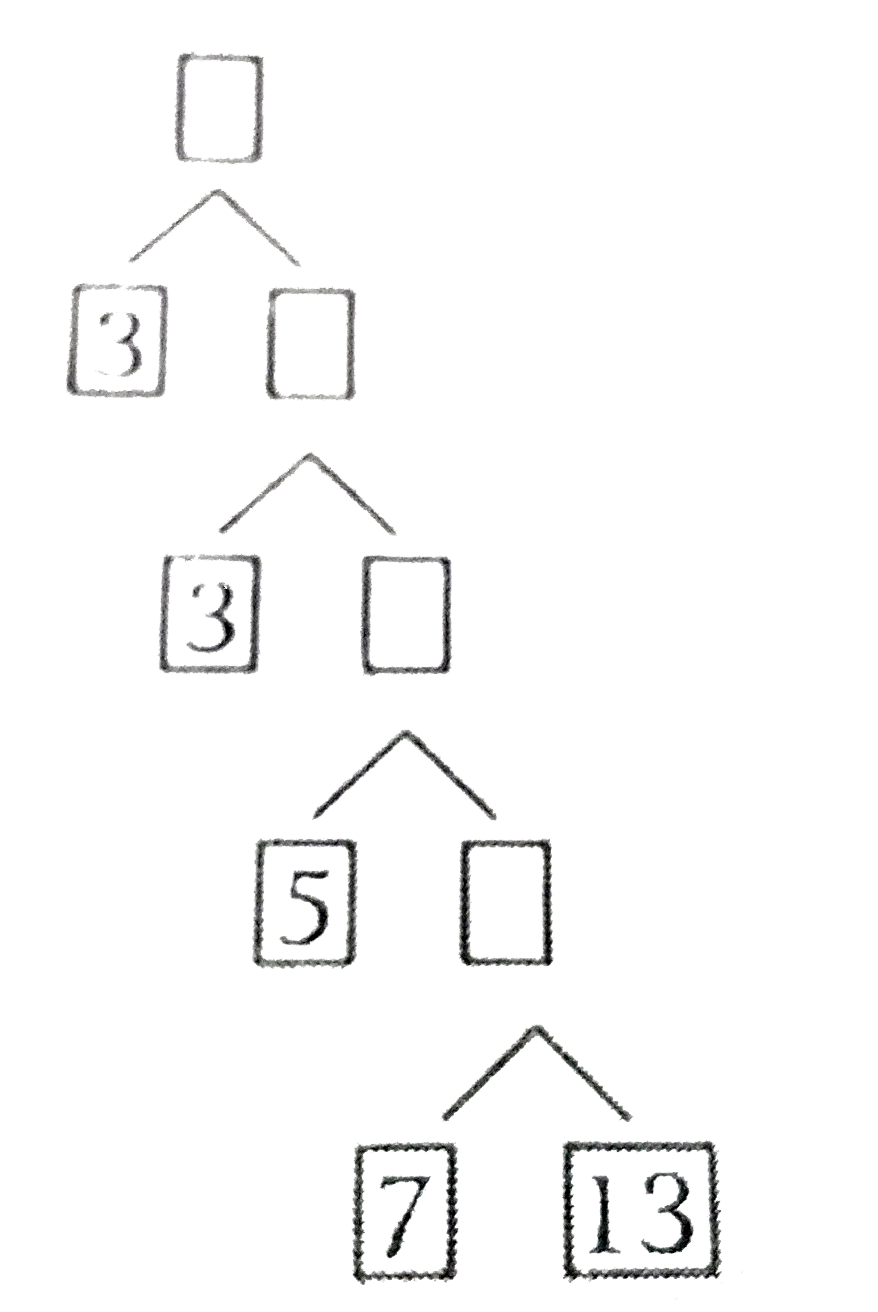
View SolutionAge of a tree can be derived by
View Solution
One method of calculating the approximate age , in years, of a tree of a particular species is to multiply the diameter of the tree, in inches, by a constant called the growth factor for that species. The table above gives the growth factors for eight species of trees.
If a white birch tree and a pinoak tree each now have a diameter of 1 foot,which of the following will be closest to the difference,in inches,of their diameters 10 years from now?(1foot=12inches)
View Solution
